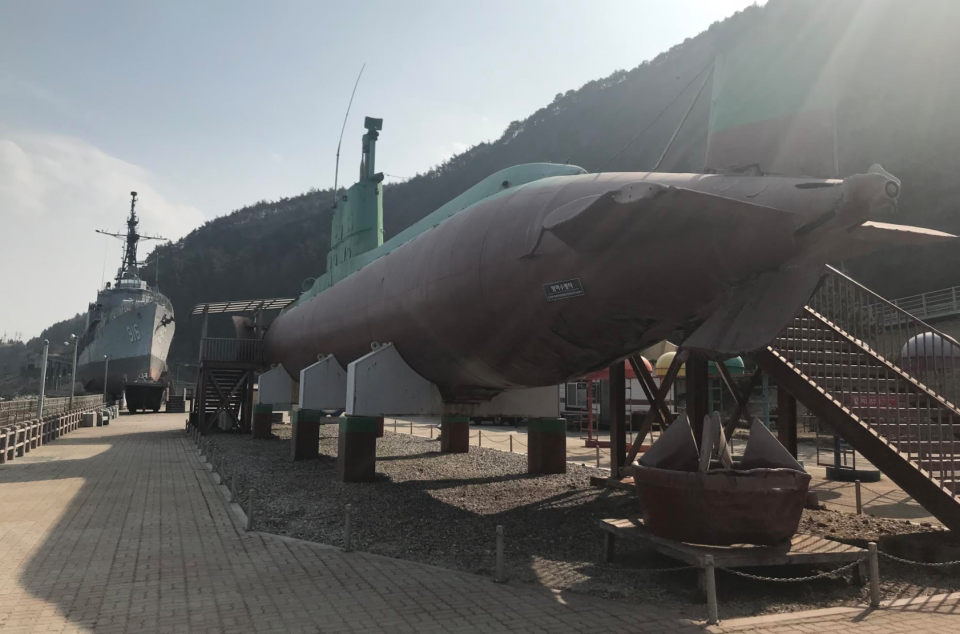North Korean submarine near Olympic Games a reminder of region's history

GANGNEUNG, South Korea—Even as South Korea puts the finishing touches on an Olympics that might possibly bear some real peace dividends with North Korea, there are always reminders that the nation has lived under a threat that Americans can’t even imagine.
Five miles from the Olympic arenas, along the rocky, barbed-wire-guarded coast of Gangneung, there stands a submarine, perched on a mount in a small park. The sub is a Cold War-era relic, painted a garish green and deep red, and it’s unremarkable, as subs go…except, of course, for the mangled iron that is its stern.
This is a North Korean spy submarine, and it’s the centerpiece of one of the more remarkable incidents of international espionage in recent world history.
September 15, 1996. The submarine—a Sang-O class sub with 26 crewmen aboard—slips into South Korean waters and sends three commandos into South Korean territory with the intent of spying on local naval installations. Two days later, while trying to bring the commandos back aboard, the submarine ran aground, crushing its rudder and rear propeller.
All attempts to free the sub from the rocks failed, and the North Koreans thus switched into escape mode. They destroyed all sensitive documents and equipment on the sub, and then abandoned it to flee into rural South Korea. Their goal: reach the DMZ, about 50 miles north along the coast.
While leaving the sub, though, the North Koreans were spotted. A local resident alerted the authorities, and that set off a 49-day manhunt as South Korea sought to run the North Koreans to ground however possible.
Of the 26 crewmen aboard the sub, 13 were killed in action. Eleven more were killed by their own men, apparently in retaliation for grounding the sub. One was captured, and later defected to South Korea, and only one apparently made it back to North Korea. “The Red guerrillas were mopped out completely,” reads an ominous-undertone sign beside the sub.
The incident, in which 11 South Korean soldiers and six civilians were also killed, infuriated the South Korean government and threatened to scuttle peace talks that had been underway for several years. North Korea initially attempted to claim that the sub had unintentionally wandered into enemy waters, a claim that didn’t even stand up to a candle’s worth of scrutiny. North Korea later issued a statement that expressed “deep regret for the submarine incident … that caused the tragic loss of human life,” and promised to prevent similar incidents in the future.
“I am pleased that Pyongyang has pledged to prevent the recurrence of such an incident and has expressed its willingness to work with others for durable peace and stability on the peninsula,” then-President Clinton said in a statement.
Today, the sub stands mounted at Gangneung Unification Park, a trophy that the South Koreans proudly display. It’s no accident that the sub faces a gargantuan decommissioned South Korean battleship, an effective visual metaphor for how South Korea sees itself against its northern neighbor. There’s always the hope for peace—hence the “Reunification” in the name of the park—but there’s always the awareness that war’s never far away, either.

____
Jay Busbee is a writer for Yahoo Sports. Contact him at jay.busbee@yahoo.com or find him on Twitter or on Facebook.

